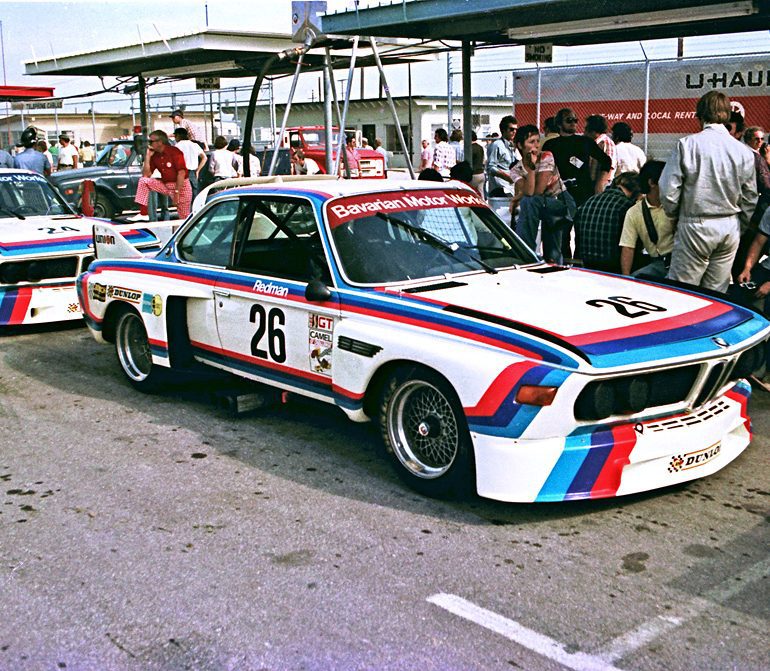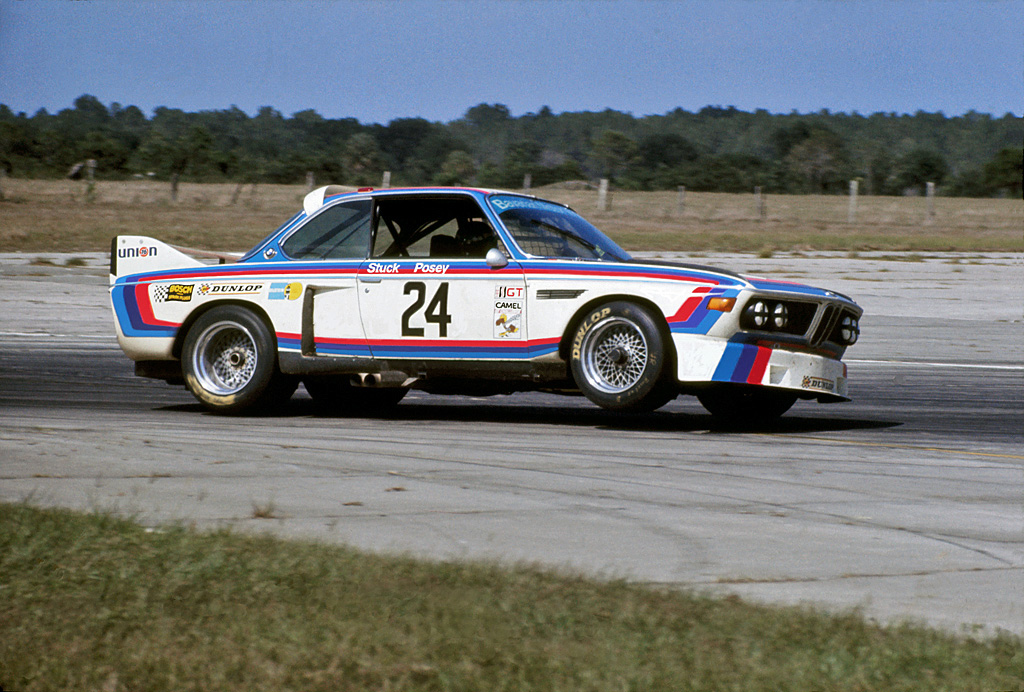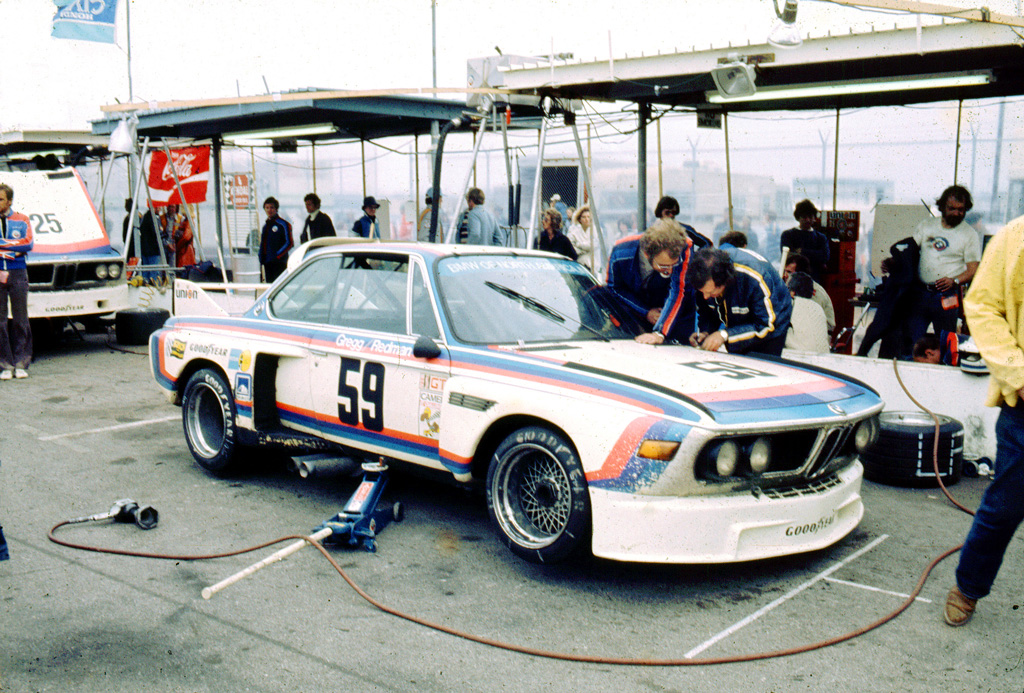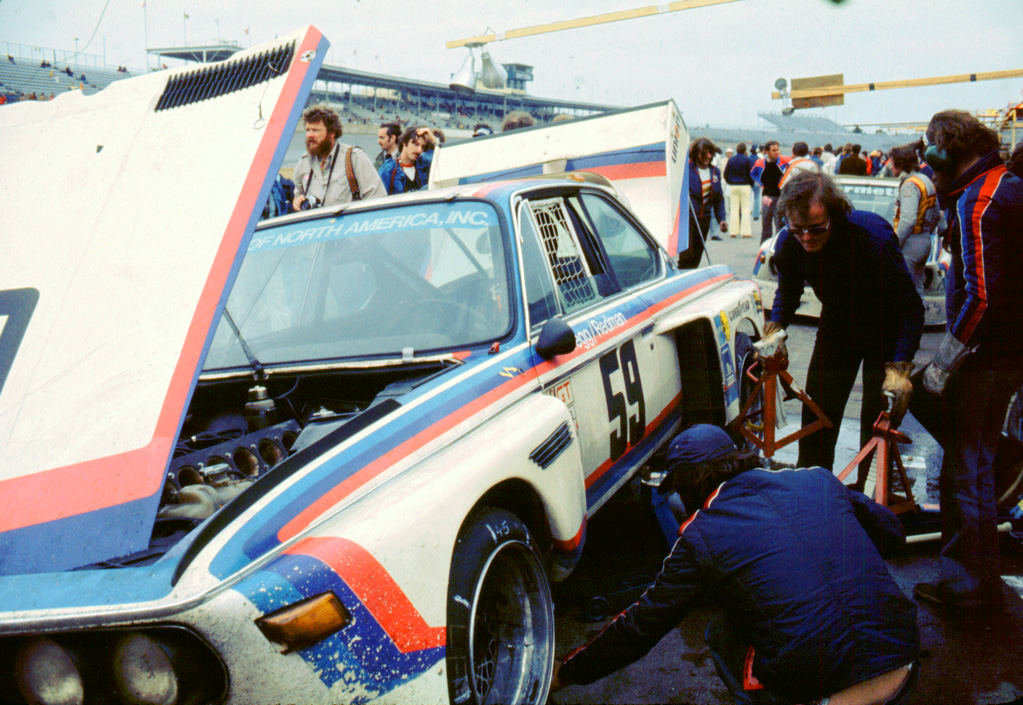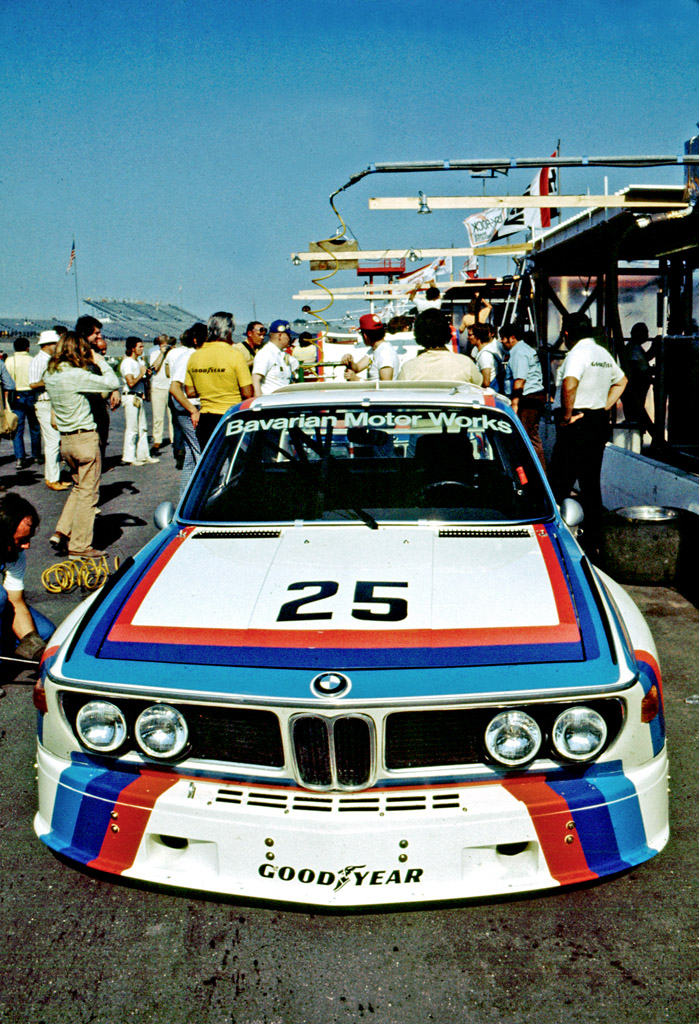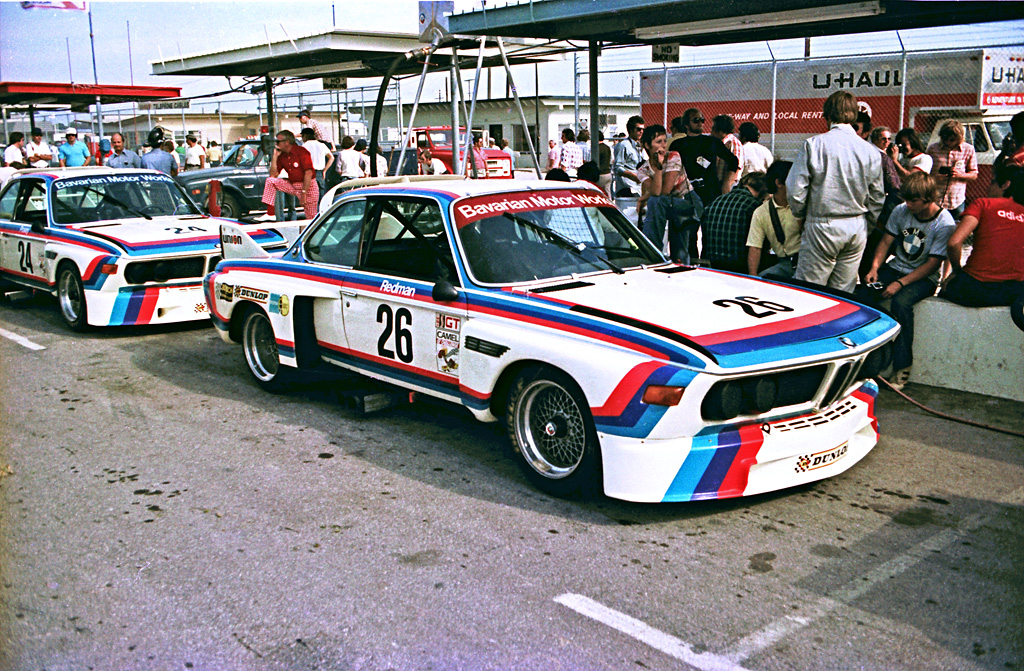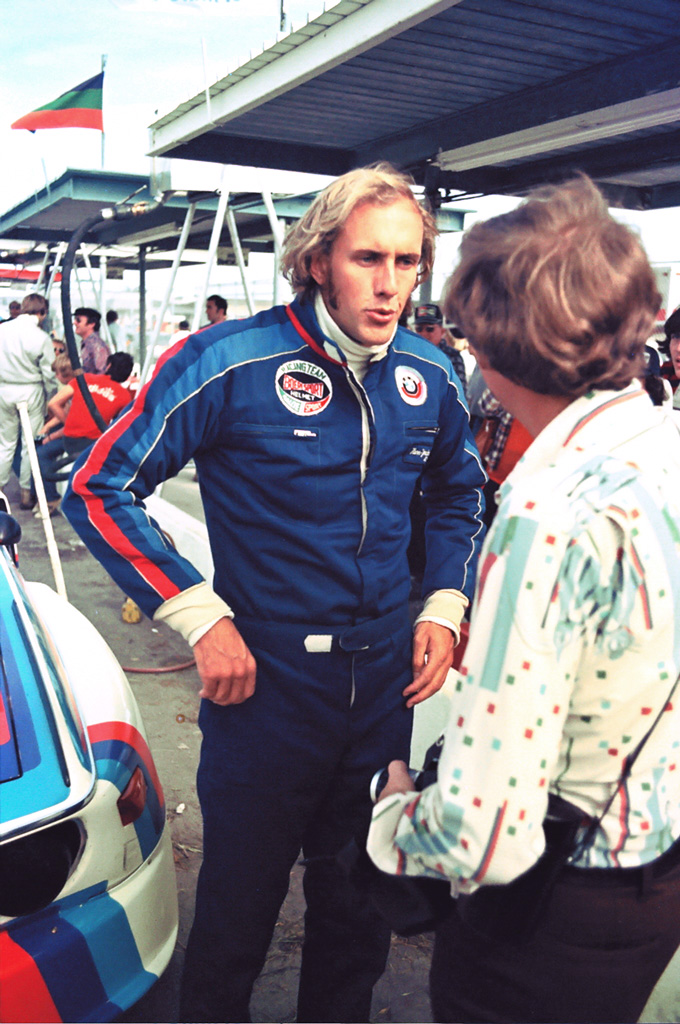1975 BMW 3.5 CSL IMSA
Among all the BMWs using the Coupe Sport Leicht (CSL) name, none is as outrageous as the 1975 IMSA contender featured here. With superwide fender flares and a dazzling paint scheme, it can be ranked among the most visually exciting racecars ever made. It is also one of the most successful of all the CSL programs winning seven IMSA races outright with Hans Stuck taking four wins in 1975
Only four CSLs were campagned by BMW North America to compete in the IMSA series. They wanted to reestablish the BMW name in American motor sports and they made a safe bet by using a design that had already proven itself in Europe. Since the regulations were somewhat different overseas, these cars could be much lighter with less trim that resulted in a car close to 2315 lbs (1000 kg).1 The 1975 cars are easily identified by their lack of 3/4 windows which were refitted for the 1976 season.
The original CSL was conceived to help BMW and companies like Alpina and Schnitzer win the European Touring Car Championship (ETCC). It was the first product of BMW Motorsport GmbH, a subsidiary of BMW dedicated to motor sports development that is now more famously known as the M division.
To prepare the 3.0 CS for ETCC, Jochen Neerpasch and the rest of BMW M stripped out the cars and added a drastic aerodynamic kit that gave the car its Batmobile nickname. These appendages were included on a run of 167 homologation specials that were finished in either Polaris Silver or Chaonix White. In its first year out, the CSL won the 1973 ETCC and BMW was then motivated to go further with their program.
Over the winter, an all new engine known as the M49 was developed with a DOHC setup and 24 valves for the 1974 season. It was increased to 3.5 litres and modified into the M49/2 for Lemans. BMW North America jumped on the opportunity presented with the new engine to help compete against the Porsches racing in IMSA GTO class.
“In fact, BMW, like Porsche and Ford, had been expecting the International Group 5 Championship of Makes regulations, based on a car’s silhouette, to come into force for 1975, but when it did not, the marketing requirements of the States appealed a lot more than grinding the non-existent opposition into the dust in the European series.”1
Like many of the IMSA GTO contenders, BMW North America didn’t hold back when reconsidering the aerodynamics of the CSL. A huge bodykit was fitted that included much wider fender flares and a deeper front valence.
BMW raced several cars in 1975 with remarkable success, but lost the Camel GT Challenge trophy by a few points to the Brumos Racing Porsche RSR. This helped establish the team as competitive and the CSL was improved even more for the following season. Drivers Peter Gregg and Brain Redman won the 1976 24 Hours of Daytona, taking BMW’s first major victory on American soil. This included opposition such as John Greenwood’s Corvette and a large Porsche contingent.
Past 1975, the FIA introduced the fourth generation Group 5 rules which allowed for much more development than Group 4 or IMSA. Many of the defunct 3.0 and 3.2 liter cars from the ETCC were converted and raced up until 1979. These Group 5 cars are distinguished with a much longer rear wing and a more protruding front spoiler as raced at Le Mans. Furthermore they were fitted with an upright 3.5-liter 24 valve M49 engine compared to the Group 4 IMSA Spec with 30° angle engine.
Only two of the four cars retain currently their IMSA GTO bodywork, the first belonging to BMW which is regularly shown and raced. Serial number 986 is owned by Kemper Miller who bought it directly from Peter Gregg at the end of the 1976 season. It still retains the same #59 as it did when it won the Daytona 24 in 1976.
1975 BMW 3.5 CSL IMSA Gallery
See full 1975 BMW 3.5 CSL IMSA Gallery here
In Detail
| type | Racing Car |
| production years | 1975 – 1976 |
| built at | Germany |
| production | 4 |
| engine | M49/2 Inline-6 |
| position | Front Longitudinal |
| aspiration | Natural |
| valvetrain | DOHC, 4 Valves per Cyl |
| fuel feed | Kugelfischer Fuel injection |
| displacement | 3498 cc / 213.5 in³ |
| bore | 94 mm / 3.7 in |
| stroke | 84 mm / 3.31 in |
| power | 328.1 kw / 440 bhp @ 8600 rpm |
| specific output | 125.79 bhp per litre |
| bhp/weight | 419.05 bhp per tonne |
| body / frame | Unit Steel w/Aluminum Panels |
| front tires | 12.5 x 16 Dunlop |
| rear tires | 15.75 x 16 Dunlop |
| front brakes | Discs |
| rear brakes | Discs |
| steering | Rack & Pinion |
| f suspension | MacPherson Struts |
| r suspension | Semi-Trailing Arms |
| curb weight | 1050 kg / 2315 lbs |
| transmission | Getrag 5-speed |
| key drivers | Brian Redman, Sam Posey, Hans Stuck, David Hobbs, Peter Gregg |
| race victories | 1976 Daytona 24 |


